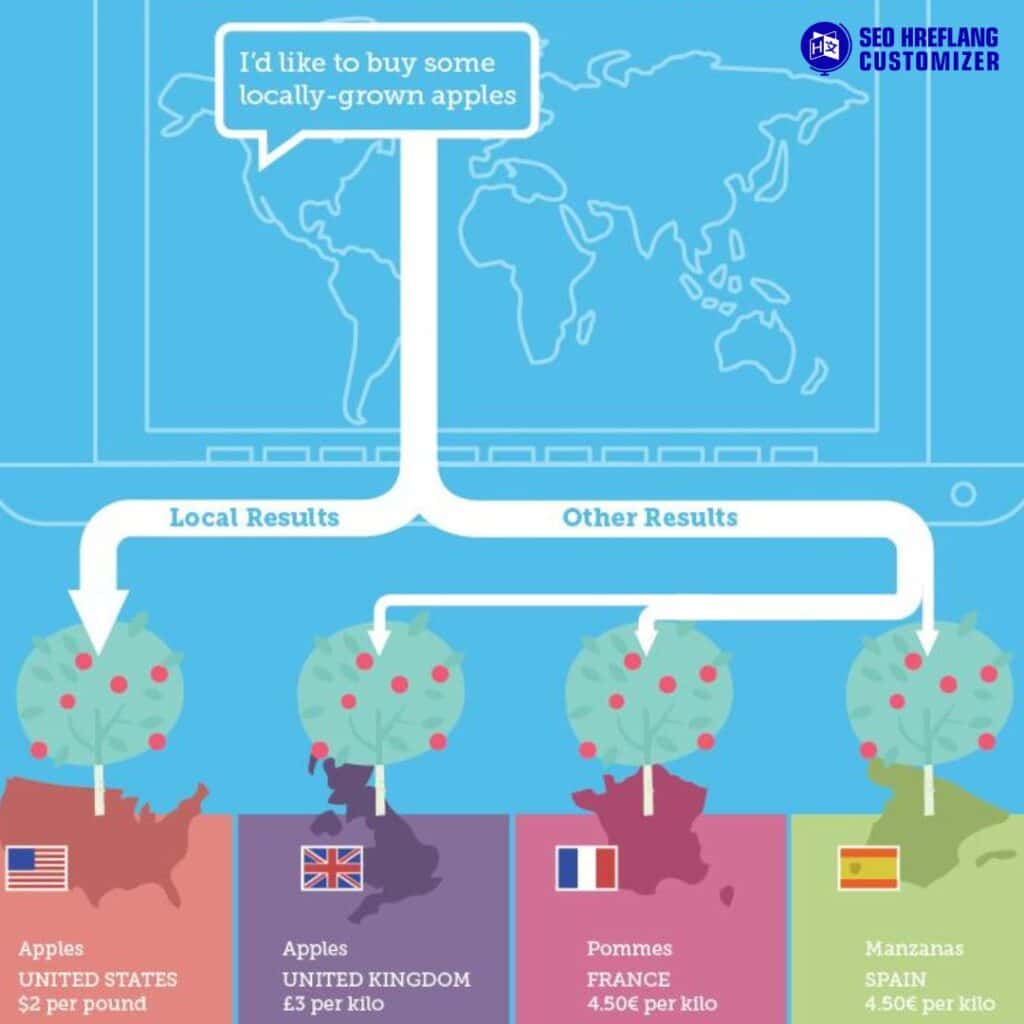In today’s interconnected world, expanding your business beyond domestic borders has become a strategic imperative for sustainable growth. International Search Engine Optimization (SEO) plays a crucial role in ensuring your website reaches a global audience and ranks well in search engine results across different countries and languages.
This comprehensive guide aims to provide a deep understanding of international SEO, its key components, challenges, and best practices, empowering businesses to optimize their online presence on a global scale.
Introduction to International SEO
1.1 The Importance of Global Expansion
In today’s highly interconnected world, expanding your business beyond domestic borders is not just a choice but a necessity for sustainable growth. International SEO plays a vital role in this expansion by helping businesses reach a global audience, establish their online presence in different countries, and optimize their website to rank well in international search engine results.By expanding internationally, businesses can tap into new markets, gain access to a diverse customer base, increase revenue potential, and reduce reliance on a single market. Moreover, globalization and digitalization have made it easier than ever to connect with international customers and build global brand recognition.
1.2 Understanding International Search Engines
While Google is the dominant search engine worldwide, it’s important to recognize that different countries have their own popular search engines. For example, Baidu in China, Yandex in Russia, and Naver in South Korea hold significant market shares in their respective countries. Understanding the nuances of these search engines and their algorithms is crucial for international SEO success.
International search engines may have different ranking factors, user behaviors, and search trends. Adapting your SEO strategies to the specific search engine requirements of your target countries is essential to achieve optimal visibility and organic rankings.

1.3 Key Differences in International SEO
International SEO differs from domestic SEO in several key aspects. Language and cultural barriers pose unique challenges when optimizing content for international audiences. Keyword research must consider not only search volume but also language variations and cultural nuances. Additionally, website structure, URL configuration, and handling duplicate content become more complex when dealing with multiple languages and regions.
International Keyword Research
2.1 Cultural and Language Considerations
Cultural differences significantly impact search behavior and keyword preferences. To conduct effective international keyword research, businesses must understand the cultural nuances of their target markets. This includes adapting language, terminology, and search intent to align with the local audience.
2.2 Localized Keyword Analysis Tools
Various tools can aid in international keyword research, such as Google Trends, SEMrush, and Ahrefs. These tools provide insights into keyword popularity, competition, and trends across different languages and regions. Leveraging these tools helps identify relevant keywords for each target market and optimize content accordingly.
2.3 Analyzing Global Search Trends
Analyzing global search trends is crucial for identifying seasonal variations, emerging keywords, and market-specific trends. Businesses can leverage this information to align their content and marketing strategies with the evolving demands of international audiences.
International Website Structure
3.1 Language and Regional Targeting
Language targeting involves creating content specific to each target language, while regional targeting focuses on catering to the preferences of users in different regions. A thoughtful combination of language and regional targeting ensures that users are directed to the most relevant version of the website.
3.2 URL Structure and Internationalization
URL structure plays a vital role in international SEO. Businesses can utilize subdirectories (e.g., example.com/fr), subdomains (e.g., fr.example.com), or country-coded top-level domains (e.g., example.fr) to indicate language or country targeting. Implementing proper hreflang annotations signals to search engines the language and regional variations of each webpage.

3.3 Managing Duplicate Content Across Multiple Languages
Multilingual websites often face challenges related to duplicate content. Search engines penalize websites for duplicate content, impacting rankings.
Implementing best practices such as canonical tags and hreflang annotations helps search engines understand the intended language and regional targeting, mitigating the risks of duplicate content issues.
3.4 Handling Geotargeting and Hreflang Annotations
Geotargeting allows businesses to specify the target country for their website or specific webpages. Through tools like Google Search Console, businesses can set geotargeting preferences to improve visibility in specific countries. Additionally, hreflang annotations should be accurately implemented to indicate the intended language and country targeting, aiding search engines in displaying the appropriate version of the website to users.
Content Localization and Translation
4.1 Adapting Content for International Audiences
Localization involves adapting content to resonate with the cultural preferences, linguistic style, and norms of the target audience. It goes beyond translation and requires understanding the cultural context, idiomatic expressions, and relevant references that appeal to local users.
4.2 Cultural Sensitivity and Localization Strategies
Cultural sensitivity is crucial in international SEO to avoid cultural misunderstandings or offensive content. Businesses should conduct thorough research on the cultural norms, taboos, and sensitivities of their target markets. Collaborating with local experts or hiring professional translators who understand the target culture can help ensure content aligns with local preferences.
4.3 Machine Translation vs. Human Translation
Machine translation tools like Google Translate provide convenient options for translating content. However, they may lack accuracy and context. Human translation, on the other hand, offers higher quality and better localization. Businesses must carefully evaluate the trade-offs between speed and accuracy when choosing between machine and human translation.
4.4 Multilingual Content Management Systems (CMS)
Multilingual CMS platforms simplify the management of multilingual websites. They provide features such as language switchers, content versioning, and localized SEO settings. Utilizing a multilingual CMS streamlines content creation, translation workflows, and ensures efficient international SEO management.
Technical Considerations for International SEO
5.1 Website Hosting and Server Location
Website hosting and server location can impact international SEO performance. Choosing servers closer to the target audience reduces latency and improves website speed. Content Delivery Networks (CDNs) can further enhance performance by caching content in multiple locations worldwide.
5.2 Implementing Language and Country Targeting
Implementing language and country targeting tags in the website’s HTML, such as hreflang tags, helps search engines understand the intended language and country relevance of webpages. Structured data markup, such as schema.org, can also improve the visibility and understanding of content by search engines.
5.3 Mobile Optimization for Global Audiences
With the increasing use of mobile devices globally, optimizing websites for mobile is crucial. Responsive design, mobile-friendly layouts, and fast-loading mobile pages are essential for providing a seamless user experience to international mobile users.
5.4 Website Performance and International Users
Website performance impacts user experience and SEO. Optimizing page load speed, image optimization, minimizing server response time, and reducing redirects are critical for delivering an optimal experience to international users, regardless of their location.
International Link Building
6.1 Localized Link Building Strategies
Localized link building involves acquiring high-quality backlinks from local websites and directories in each target market. Building relationships with local influencers, industry associations, and relevant businesses can contribute to a strong backlink profile specific to each country or language.
6.2 Building Relationships with International Influencers
Influencer marketing is valuable in international SEO, as influencers hold significant sway over their followers’ purchasing decisions. Identifying influential figures in target markets and establishing collaborations can lead to increased brand visibility, backlinks, and engagement.
6.3 Navigating Link Building Regulations and Guidelines
Different countries may have specific regulations and guidelines related to link building practices. Businesses must stay informed about these regulations to ensure compliance and avoid penalties. Understanding the guidelines provided by search engines regarding link building is crucial for ethical and effective international SEO.
Social Media and International SEO
7.1 Leveraging Social Media for Global Reach
Social media platforms offer an excellent opportunity for businesses to connect with international audiences, increase brand awareness, and drive website traffic. Understanding the popular social media platforms in each target market and tailoring content to resonate with local users is key to success.
7.2 International Social Media Platforms
In addition to global platforms like Facebook, Twitter, and Instagram, each country has its own popular social media platforms.
For example, WeChat in China, VKontakte in Russia, and Line in Japan are widely used. Understanding these regional platforms and adapting content strategies to fit their unique features and user preferences can boost social media engagement and organic reach.

7.3 Cultural Adaptation and Localized Social Media Campaigns
Cultural adaptation plays a crucial role in social media campaigns for international audiences. Content must align with local cultural norms, values, and interests to effectively engage users. Utilizing local social media managers or agencies can provide valuable insights and help create culturally relevant and impactful campaigns.
International SEO Analytics and Reporting
8.1 Tracking International Organic Search Traffic
Tracking international organic search traffic requires the use of analytics tools like Google Analytics. By segmenting data based on countries, businesses can assess the performance of their international SEO efforts, identify trends, and make data-driven optimizations.
8.2 Analyzing Multilingual Keyword Rankings
Monitoring keyword rankings across different languages and regions provides insights into the effectiveness of SEO strategies in each target market. Rank tracking tools and SERP (Search Engine Results Page) monitoring help businesses understand their organic visibility and make informed decisions.
8.3 Measuring ROI and Conversion Metrics
Measuring the return on investment (ROI) of international SEO efforts involves tracking conversion metrics specific to each target market. Key performance indicators (KPIs) such as goal completions, revenue, engagement metrics, and customer acquisition can help gauge the success and impact of international SEO campaigns.
8.4 Reporting and Benchmarking Global SEO Performance
Creating comprehensive international SEO reports allows businesses to evaluate the performance of their international SEO strategies, identify strengths and weaknesses, and make informed optimizations. Benchmarking against competitors and industry standards provides valuable insights for continuous improvement.
Challenges and Pitfalls in International SEO
9.1 Language and Cultural Barriers
Language and cultural barriers present challenges in international SEO. Understanding and adapting to local languages, idioms, and cultural norms are essential to effectively connect with international audiences. Cultural sensitivity and localized strategies help overcome these barriers.
9.2 Legal and Regulatory Considerations
Operating in different countries entails compliance with legal and regulatory frameworks. Businesses must navigate privacy laws, copyright regulations, data protection policies, and other country-specific requirements to ensure their international SEO activities are in accordance with local regulations.
9.3 International Competitor Analysis
Analyzing international competitors is crucial for understanding their SEO strategies, identifying gaps, and capitalizing on opportunities. Conducting thorough competitor analysis helps businesses stay competitive and adapt their international SEO strategies accordingly.
9.4 Dealing with International Algorithm Updates
Search engine algorithms evolve and update regularly, impacting international SEO strategies. Staying informed about algorithm changes and their effects on search results in different countries is crucial. Adapting SEO practices and staying within search engine guidelines ensure long-term success.
Emerging Trends and the Future of International SEO
10.1 Voice Search and Conversational SEO
With the rise of voice assistants and smart speakers, voice search is becoming increasingly prevalent. Optimizing content for voice search and conversational queries in different languages will play a significant role in international SEO.

10.2 Machine Learning and Artificial Intelligence
Machine learning and artificial intelligence technologies continue to advance, shaping the future of international SEO. These technologies can improve content optimization, automate localization processes, and enhance user experience on a global scale.
10.3 The Rise of Global E-Commerce
The growth of global e-commerce presents immense opportunities for businesses. International SEO is essential for optimizing global e-commerce websites, reaching international customers, and overcoming logistical challenges associated with cross-border transactions
10.4 Expanding Opportunities in Emerging Markets
Emerging markets hold significant growth potential for businesses. Identifying and entering these markets through effective international SEO strategies can lead to successful expansion and increased market share.
International SEO is a dynamic and complex field that requires a strategic approach to tap into global opportunities successfully. By understanding the nuances of international SEO, conducting thorough research, adapting content and strategies to local preferences, and leveraging emerging trends, businesses can unlock the potential for global growth, establish their online presence in different countries, and connect with a diverse audience on a global scale.
Implementing effective international SEO strategies is essential in today’s interconnected world, where global expansion is key to long-term success.





